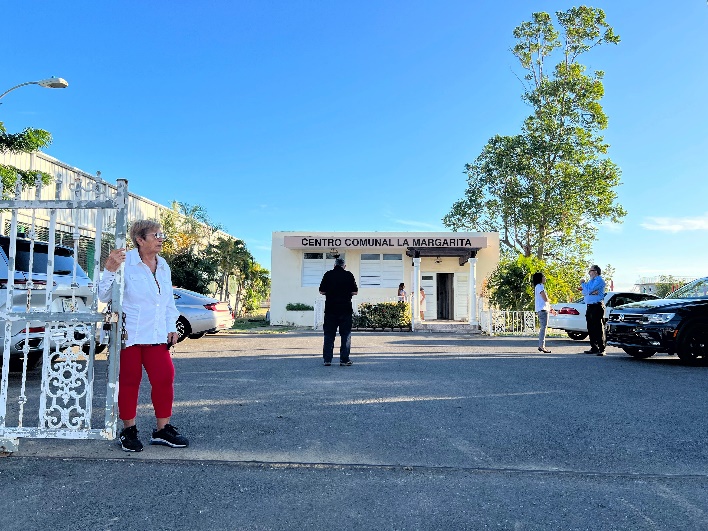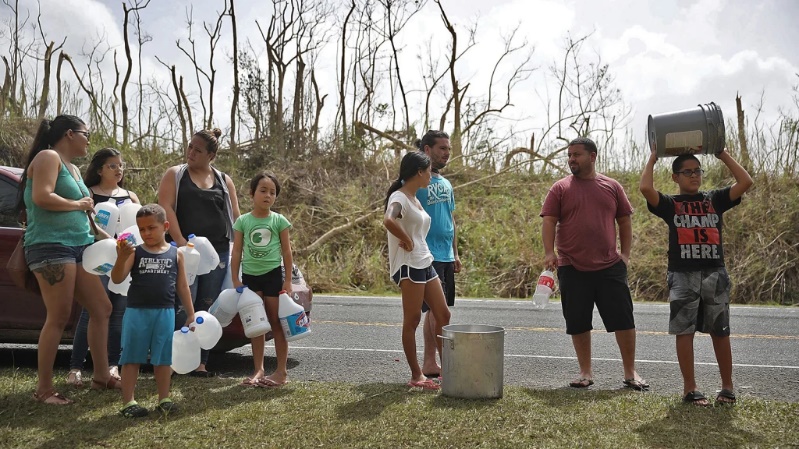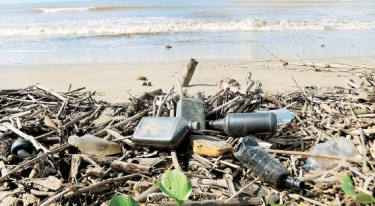
Avellon Williams
PUERTO RICO- The closed windows of Salinas, a town on Puerto Rico’s southeast coast that is considered one of the most polluted zones in the country, is a permanent fixture.

There have been health concerns ranging from cancer to Alzheimer’s in this community for years due to toxic ash and chemicals from coal-fired and thermoelectric power plants.
The US Environmental Protection Agency, EPA, revealed last year that Salinas has one of the highest levels of ethylene oxide, a cancer-causing gas, among US jurisdictions.
“We’re fighting a lot of battles,” said José Santiago, a 74-year-old retiree.
In response to the federal government’s attention on Salinas, Santiago, and others are demanding a huge clean-up and penalties.
“I will keep fighting until I die,” said Elsa Modesto, a 77-year-old retiree who has not missed a single EPA meeting since last year’s announcement. “I want to know what’s in the environment.”

Puerto Rico is 22nd out of 56 US states and territories in terms of the amount of managed waste released per square mile, at 4.2 million pounds. Based on data from the EPA’s Toxics Release Inventory, six of the top 10 municipalities in that category are in Puerto Rico’s southern region, with Salinas ranking sixth.
Moreover, Salinas has one of the highest cancer incidence rates in Puerto Rico, with 140 cases reported in 2019, according to the island’s Central Registry of Cancer.
As a result of the coal-fired power plant that started operating in Guayama in 2002, cases of cancer and other diseases have increased in Salinas, said Gerson Jiménez, director of the Menonite Hospital, who testified in public hearings in favor of the plant’s closure.
“It has been observed by medical doctors in the southeast area of Puerto Rico that there has been a significant increase in respiratory, urinary, and other illnesses as well as a significant increase in cancer diagnoses since the AES Corporation began operating in Guayama,” he testified at one hearing.

For the first time, the EPA is testing air and groundwater in Puerto Rico’s southeast region, with Administrator Michael Regan saying low-income communities and communities of color have suffered unjustly.
Salinas has a population of nearly 26,000, with 28 percent identifying as Black and a median household income of US$18,000. According to the US Census Bureau, more than half of its population is poor.
This town is located near a coal-burning power plant, two of the island’s largest thermoelectric plants, and a company that makes thermoset composites, a material used in major appliances like refrigerators. According to the EPA, IDI Caribe Inc is the company that emits the most emissions in Salinas.

According to officials, styrene and ethylene oxide are the most common chemicals released into Salinas’ air and water. There are also high levels of sulphur dioxide in Salinas and Guayama.
According to a study published in late 2021 by Puerto Rico’s Chemistry Association, potable water in Salinas contains heavy metals linked to coal. As far as regulatory limits are concerned, the amounts found did not exceed them.
Researchers conducting that study had to collect samples from individual homes because the government’s water and sewer company at the time blocked access to aquifers residents rely on, environmental activist Victor Alvarado said. Legislators approved a law requiring the company to provide testing access since then.

Salinas is also home to Steri-Tech, a company that sterilises medical equipment with ethylene oxide. It is a colourless, flammable gas with a slightly sweet odour that is used to clean about 20 billion sterile medical devices each year.
According to the EPA, short-term exposure to the gas does not appear to pose any risks, but long-term exposure can cause lymphoma and breast cancer.
There were two explosions reported by Steri-Tech – one in October and one earlier this month – that frightened residents and raised concerns about toxic chemicals.
“My house shook!” said Lillian Melero, a 60-year-old retiree who recalled that the explosion broke a neighbour’s windows.

Despite the contamination in her town, Meleroe wants answers from federal officials. “They write down a lot of things, but I haven’t seen any changes,” she said.
Santiago, the retiree who lives a few blocks from Steri-Tech, not only closes his windows but has planted avocado trees, small palm trees, and bougainvillaea plants with bright orange and fuchsia flowers in an effort to reduce exposure to ethylene oxide and other contaminants.
Residents continue to feel frustrated that their complaints about contamination have been ignored for years despite those measures.
Community leader Wanda Rios was frustrated with her local efforts to combat pollution and received no response from higher authorities.
“I stop this at a federal level,” she said. “I don’t waste my time here in Puerto Rico.”




